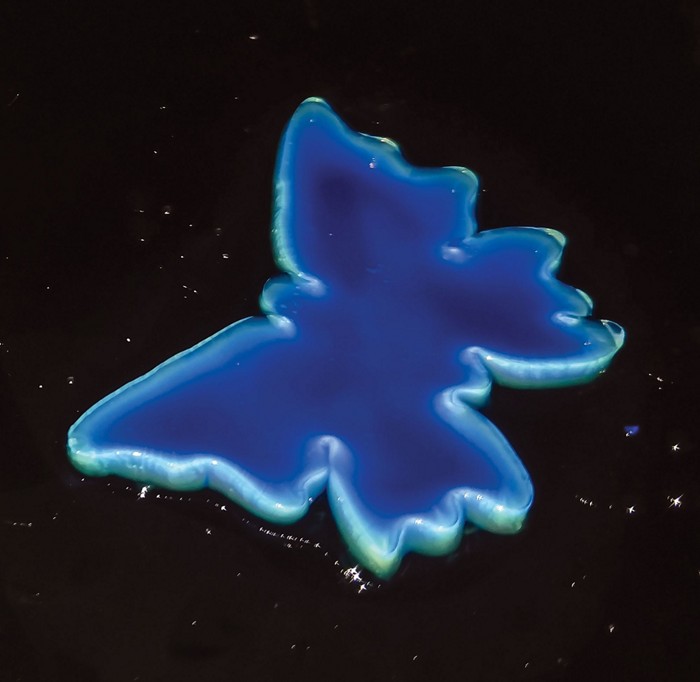Tissue Mimicking
TISSUE MIMICKING
Through the course of evolution, biological creatures have equipped themselves with various complicated systems in which multiple integrated components function together to improve animals’ chance of survival. For example, tissues of animals are soft upon touch but stiffens to prevent over-stretching. Furthermore, structural coloration of cephalopods and reptiles allow them to change color to camouflage and attract potential spouses.
Inspired by these integrated defensive functionalities in nature, we design a triblock copolymer with a bottlebrush middle block and linear chains at both end. Upon self-assembly, flexible linear chains aggregate into rigid domains and stiff bottlebrush block forms a supersoft matrix. The interplay of rigid-flexible and soft-stiff causes the polymer to be both soft and strain-stiffening, which is uniquely seen in tissues.
Furthermore, triblock copolymer forms periodically distributed spherical domains during assembly. This heterogeneous periodic nanostructure causes the material to possess structural coloration property as seen in nature.
Significantly, both adaptive mechanics and optics are architecturally programmed into the triblock copolymer by controlling the degree of polymerization (DP) of the bottlebrush backbone, the DP of linear blocks, and the DP of side chains.
Chameleon-like Elastomers

Active camouflage is widely recognized as a soft-tissue feature, and yet the ability to integrate adaptive coloration and tissuelike mechanical properties into synthetic materials remains elusive. We provide a solution to this problem by uniting these functions in moldable elastomers through the self-assembly of linear-bottlebrush-linear triblock copolymers. Microphase separation of the architecturally distinct blocks results in physically cross-linked networks that display vibrant color, extreme softness, and intense strain stiffening on par with that of skin tissue. Each of these functional properties is regulated by the structure of one macromolecule, without the need for chemical cross-linking or additives. These materials remain stable under conditions characteristic of internal bodily environments and under ambient conditions, neither swelling in bodily fluids nor drying when exposed to air.
